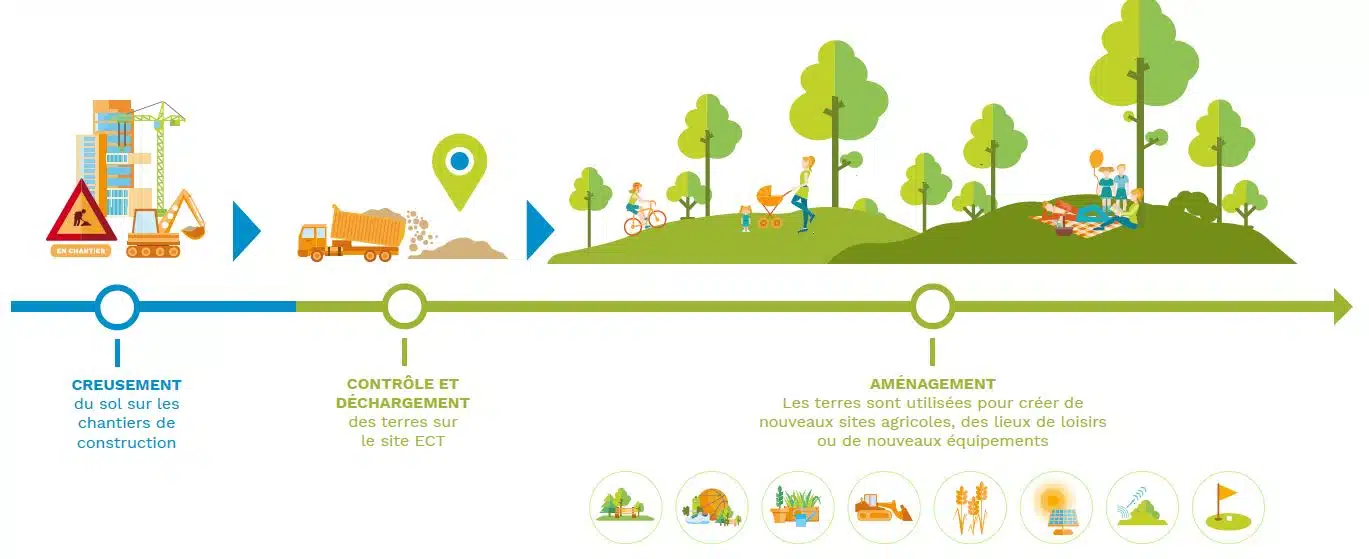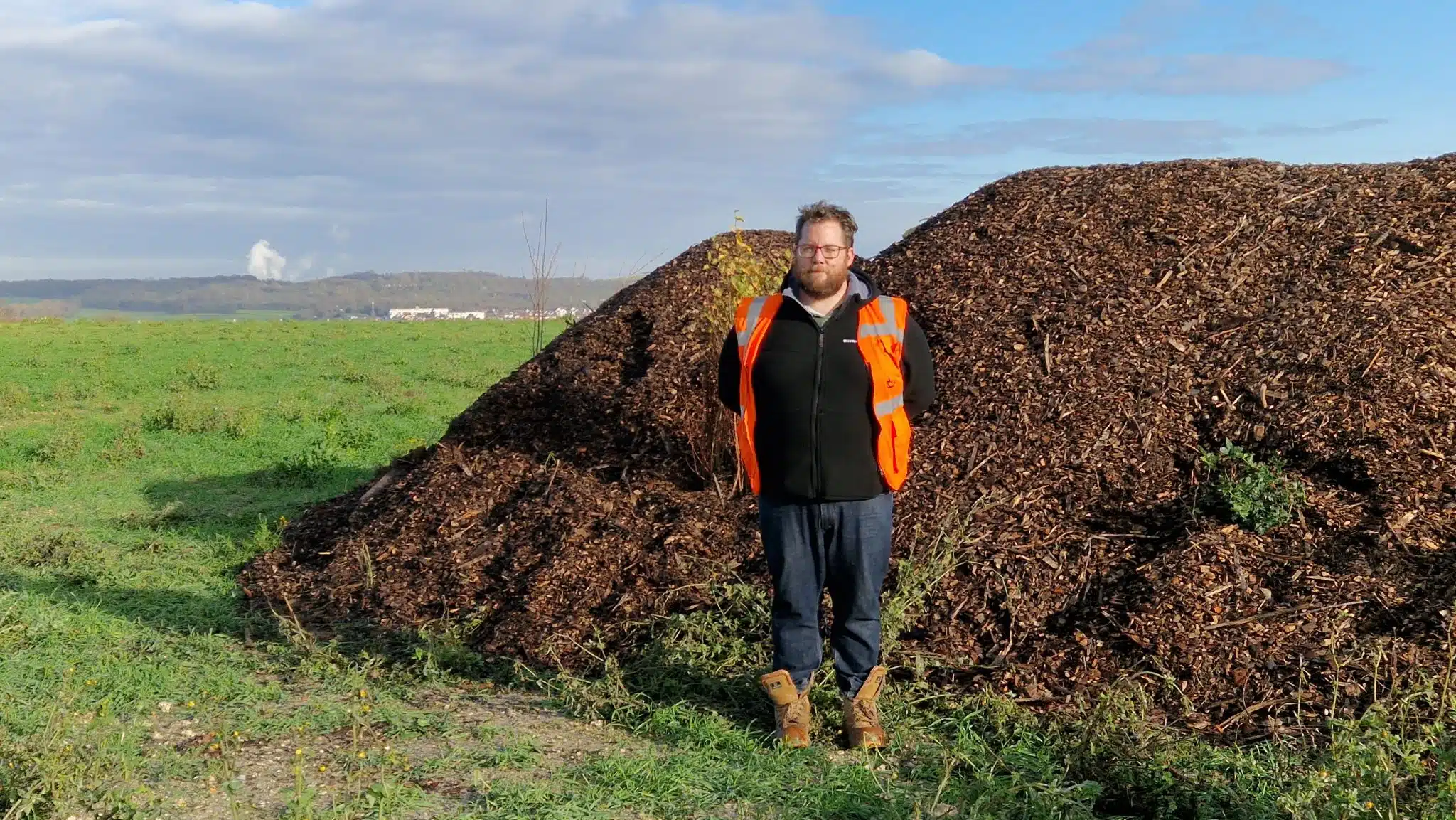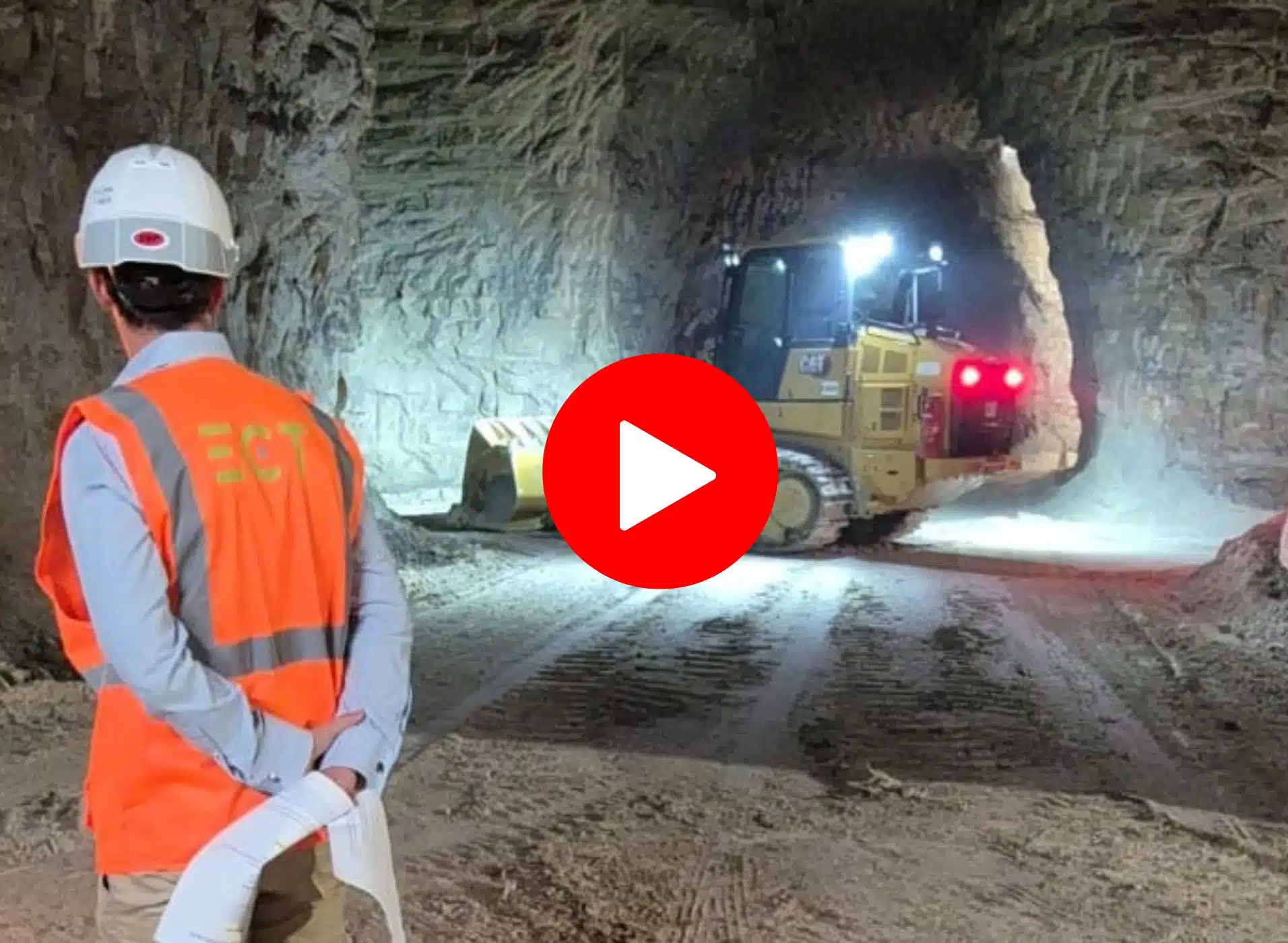March 18 is World Recycling Day, a reminder of the major circular issues surrounding the recycling and reuse of construction waste and materials! This is the core business of ECT, a company that reuses excavated soil from construction sites to create sustainable developments: parks, reforestation, biodiversity zones, photovoltaic power plants, land art, urban farms, sports and leisure grounds and facilities… In Ile-de-France, Hauts-de-France, Grand-Est and soon in Occitanie, ECT transforms excavated soil from construction sites into a resource: a noble material for creating developments with an environmental and social vocation.
Soil, an inert waste to be recycled
Yes, inert (i.e. unpolluted) excavated soil becomes waste when it leaves the site: this is the fundamental guarantee of its traceability! They are nonetheless a valuable resource, to be put to good use in development projects that meet the challenges of land enhancement, green spaces and urban sports, or agricultural rehabilitation. This is a concrete illustration of the performance of the circular economy.
Did you know?
The Potager du Roi – formerly known as “L’étang puant” – was created at Versailles by Jean-Baptiste de la Quintinie, using soil extracted during the construction of the Swiss waterworks. Classified as a historic monument in 1926 and a Unesco World Heritage site in 1979, the Potager is now an exceptional garden with over 500 fruit trees!
What does ECT actually do?
This circular economy approach is at the heart of ECT’s work, which involves working with local authorities to develop large-scale undeveloped projects by reusing this land. And there’s plenty of surplus excavated soil at ! Every year, ECT re-uses almost 13 million tonnes of treated excavated material. ECT has also developed a fertile substrate manufacturing business, a local, 100% recycled solution that represents a real alternative to imported topsoil. By 2023, ECT had produced 29,000 m3 of fertile substrate, without importing any topsoil to renaturalize its sites.



